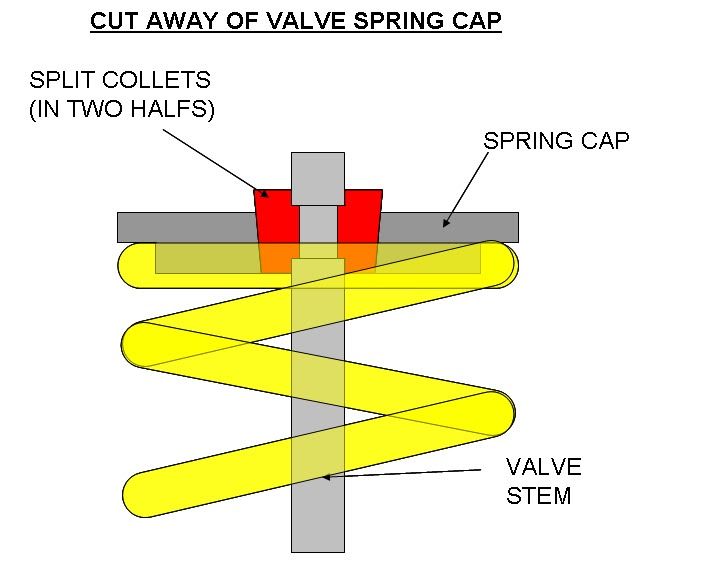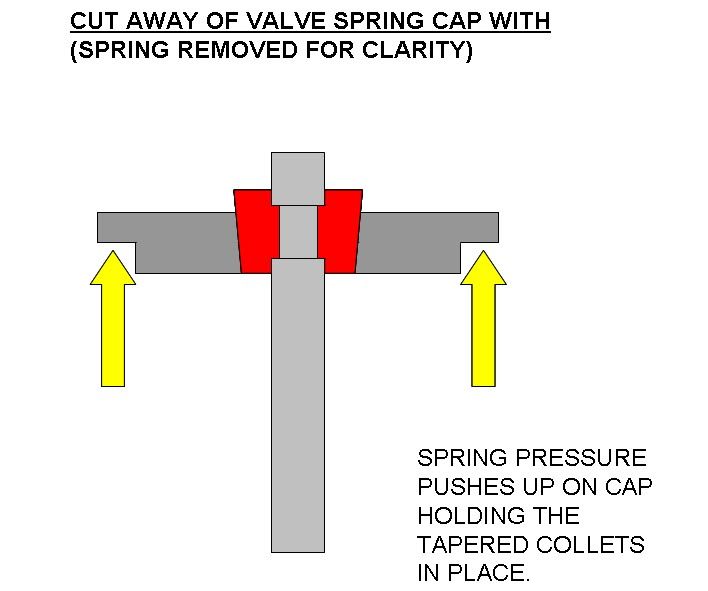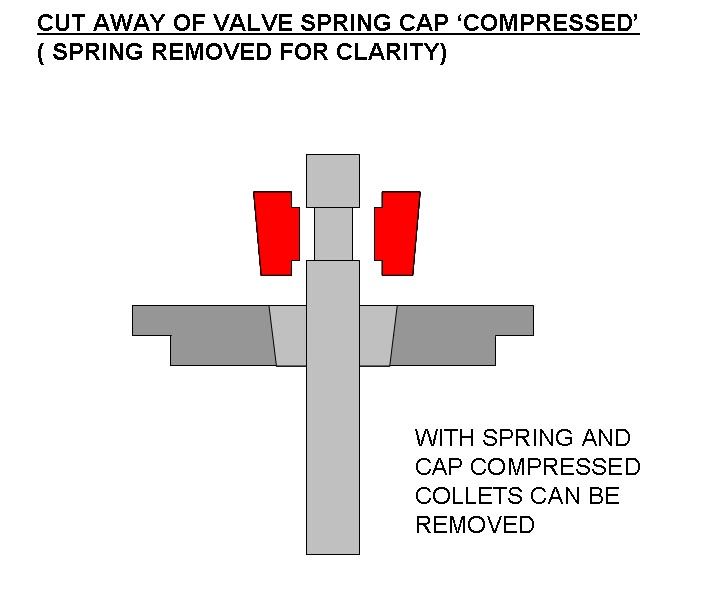Anxiously awating todays episode 
You are using an out of date browser. It may not display this or other websites correctly.
You should upgrade or use an alternative browser.
You should upgrade or use an alternative browser.
Cleaning alternator...
- Thread starter Deluks
- Start date
Got the bugger, took ages though  Dremeled a slot in it, absolutely no joy moving that. Drilled it, drilled it and drilled it some more. Got the hump, went away to do something else and found massive screwdriver in shed. Tried hammering that into the slot (which by now had rounded edges) and the bugger turned!
Dremeled a slot in it, absolutely no joy moving that. Drilled it, drilled it and drilled it some more. Got the hump, went away to do something else and found massive screwdriver in shed. Tried hammering that into the slot (which by now had rounded edges) and the bugger turned!
The pulley still won't come off though cos there's not enough clearance between the centre bolt and the inner wheel arch but with pulley out the way I could loosen the lower timing belt cover enough to get the belt off of lower cog, then some jiggling and get belt free to wrap around pulley.
but with pulley out the way I could loosen the lower timing belt cover enough to get the belt off of lower cog, then some jiggling and get belt free to wrap around pulley.
Was a bit like when birds take their bra off without removing their top
Couple of long bolts in vice, camshaft aiming skywards, socket at the bottom and using three hands I managed to get the camshaft sprocket bolt too. So I'm in a better place than I was yesterday.
The pulley still won't come off though cos there's not enough clearance between the centre bolt and the inner wheel arch
Was a bit like when birds take their bra off without removing their top
Couple of long bolts in vice, camshaft aiming skywards, socket at the bottom and using three hands I managed to get the camshaft sprocket bolt too. So I'm in a better place than I was yesterday.
Hey well done in getting that awkward git out....!
The pulley will shift either by lifting or lowering the engine on a trolley jack, or by simply heaving it over with a pinch bar.
We await tomorrows report!
Be lucky
John
The pulley will shift either by lifting or lowering the engine on a trolley jack, or by simply heaving it over with a pinch bar.
We await tomorrows report!
Be lucky
John
Top job 
A lesser man would have given up a long time ago.
As one of my tradesmen used to say to me many moons ago when I was an apprentice,
'its only metal son!'
A lesser man would have given up a long time ago.
As one of my tradesmen used to say to me many moons ago when I was an apprentice,
'its only metal son!'
Not been on the case for a few days, head off today though. Finally! Apparently your supposed to remove the throttle body and disconnect all the wires and pipes, I just left in situ and tied it to a bit of wood that straddles the engine bay.
The pistons are as black as yer hat! What's the best way to get this off? I had a go with an old credit card, will probably have to hoover the shoite out of the bores.
The head's now sitting in the garden under a couple of plastic bags, How do these valves come out then? The compressor has an adjustable 'camel toe' type bit, and a round washer on the screwthread bit. Where do these go?
The pistons are as black as yer hat! What's the best way to get this off? I had a go with an old credit card, will probably have to hoover the shoite out of the bores.
The head's now sitting in the garden under a couple of plastic bags, How do these valves come out then? The compressor has an adjustable 'camel toe' type bit, and a round washer on the screwthread bit. Where do these go?
You'll only get those valves out if your compressor is similar to Machine Marts CHT434 or CHT 461......if yours is like CHT462 then there's no chance.
The swivel end goes directly onto the valve head, and once you've lifted out the cylindrical hydraulic tappet you'll see the top of the valve stem beneath. Apply pressure by turning the tommy bar - if the valve / collet fix doesn't want to move, a sharp tap on the compressor end shifts them.
With the collets and spring out, the oil seal sits on top of the valve guide, which is now visible.
Scrape the piston heads with a blunt scraper - turn each piston to TDC when you do this and blow the crud out.
Hope this helps!
John
The swivel end goes directly onto the valve head, and once you've lifted out the cylindrical hydraulic tappet you'll see the top of the valve stem beneath. Apply pressure by turning the tommy bar - if the valve / collet fix doesn't want to move, a sharp tap on the compressor end shifts them.
With the collets and spring out, the oil seal sits on top of the valve guide, which is now visible.
Scrape the piston heads with a blunt scraper - turn each piston to TDC when you do this and blow the crud out.
Hope this helps!
John
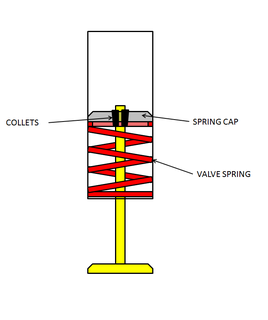
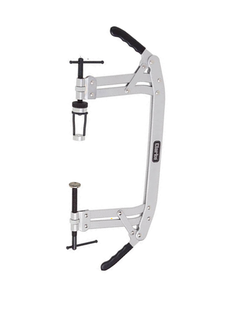
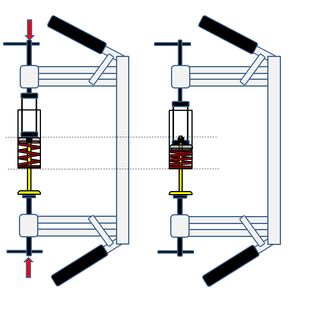
Once spring is compressed fish out the collets and release spring compressor. Remove valve cap and spring. Store the springs as you take them out. Not sure about this engine but some the springs have to be fitted the right way up. Also again not sure about this one but some alloy heads have a thin steel washer between the spring and the head to protect alloy(Sounds like Johns done this one before so he will be able to advise on this) Keep spring compressor aligned and avoid scratching the tappet bore. Sounds a bit fiddley but once you've done a couple its a doddle
Are you going to lap the valves in while they're out?
Balls, it's one of these http://www.cromwell.co.uk/SYK5036430F I'm wondering if that end is swappable or moddable to make it usable.
Link not working, but I think I know which one your talking about. It will only work where the springs sit proud of the head. It may not open wide enough to acomodate the modification required to reach your valves. Do you know anyone you could borrow the right one from? If not you may have to bite the bullet and buy one. Just make sure the spring end fits down the tappet bore. A small magnetic screwdriver would be useful too for fishing out the collets.
Best of British.
Best of British.



Once spring is compressed fish out the collets and release spring compressor. Remove valve cap and spring. Store the springs as you take them out. Not sure about this engine but some the springs have to be fitted the right way up. Also again not sure about this one but some alloy heads have a thin steel washer between the spring and the head to protect alloy(Sounds like Johns done this one before so he will be able to advise on this) Keep spring compressor aligned and avoid scratching the tappet bore. Sounds a bit fiddley but once you've done a couple its a doddle
Are you going to lap the valves in while they're out?
Pictures worth a thousand words, huh?
Time to get me coat
A bit of lapping compound will clean up the valve sealing faces, rather than grind them in.....these stellite seats are bloody hard.
John
Picture is indeed worth probably a few hundred words in this case. Except I can't see where the rest of the head goes in relation to all of this. When the spring is compressed do the faces of the valve move up into the head or stay put?
So the tappets will just lift out of the top (slippery buggers they are)
It is really necessary to 'grind' or 'lap' the valves back in? Surely if I'm just replacing seals I can pop the old ones out new ones in and refit without touching anything?
I had to google Stellite, I thought it was a word you'd made up!
So the tappets will just lift out of the top (slippery buggers they are)
It is really necessary to 'grind' or 'lap' the valves back in? Surely if I'm just replacing seals I can pop the old ones out new ones in and refit without touching anything?
I had to google Stellite, I thought it was a word you'd made up!
The valve spring compressor tightly pushes the valve closed whilst the spring is compressed. (You have to compress the spring a fair way to allow the wedge shaped collets to come free). Pick these out with either a magnetic tool or a blob of grease on the end of a screwdriver.
Then release the tension on the compressor which allows the spring to extend to its full length.
Retrieve the spring complete with 2 collets and the top cap that the collets sit into. You can then pull the valve out which will leave the oil seal on top of the valve guide.
Valve lapping is really a thing of the past as they are so hard to deal with unleaded fuel but it does no harm to give it a go. I use a rotary mop in my grinder to get the carbon off the valve stems.
John
Then release the tension on the compressor which allows the spring to extend to its full length.
Retrieve the spring complete with 2 collets and the top cap that the collets sit into. You can then pull the valve out which will leave the oil seal on top of the valve guide.
Valve lapping is really a thing of the past as they are so hard to deal with unleaded fuel but it does no harm to give it a go. I use a rotary mop in my grinder to get the carbon off the valve stems.
John
Sorry mate, didn't have a cylinder head shape in PowerPoint 
The valve stays put as John says. The spring compresses in relation to the valve to allow the removal of the collets. Look carefully at the dotted lines in the drawing. Once the valve spring is compressed you will see the valve stem poking out of the top of the spring cap where the collets are.
When the valve spring is installed it is slightly compressed so its effectively shorter than it would be when it is removed. This slight compression keeps the valve closed and also holds the collets in place. You need to compress it further to release the collets.
Its like riding a bike, once you have done it you'll wonder why you couldn't do it before
The valve stays put as John says. The spring compresses in relation to the valve to allow the removal of the collets. Look carefully at the dotted lines in the drawing. Once the valve spring is compressed you will see the valve stem poking out of the top of the spring cap where the collets are.
When the valve spring is installed it is slightly compressed so its effectively shorter than it would be when it is removed. This slight compression keeps the valve closed and also holds the collets in place. You need to compress it further to release the collets.
Its like riding a bike, once you have done it you'll wonder why you couldn't do it before
Crystal! Have had an hour today cleaning up the rocker cover ready for a quick spray with bbq paint.
Also managed to forstner 8 numbered holes in a block of wood to store the tappets, now that's organised!
Off to a wedding now on the Thames
Work may re-commence tommorow, depending on recovery time
So to confirm, do I really need to lap/grind these valves in or can I just plonk em back in (do I even need to take them out once the springs are out?)
Also managed to forstner 8 numbered holes in a block of wood to store the tappets, now that's organised!
Off to a wedding now on the Thames
Work may re-commence tommorow, depending on recovery time
So to confirm, do I really need to lap/grind these valves in or can I just plonk em back in (do I even need to take them out once the springs are out?)
Similar threads
- Replies
- 0
- Views
- 1K


